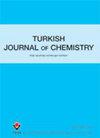两个丹参特有品种的植物化学分析及分子对接研究
IF 1.3
4区 化学
Q3 CHEMISTRY, MULTIDISCIPLINARY
引用次数: 0
摘要
使用药用植物治疗各种疾病可以追溯到几千年前,并且已经成为世界各地许多文化的一部分。植物的不同部分,包括根、叶和花,以及它们的提取物被用来开发治疗不同疾病的药物,如发烧、疼痛、炎症、感染等。本研究分别用乙醇和水对两个丹参品种的地上部分进行浸提和煎煮。丹参(SH)和丹参(Doğan)。首次利用LC-HRMS对ST属植物极性化合物进行了化学分析。所有SH和ST提取物均含有丰富的迷迭香酸、丹酚酸B、海鞘苷-7- o -葡萄糖苷和咖啡酸。本研究还研究了从SH和st中提取的最丰富的次级代谢物的抗炎和碳酸酐酶抑制特性,首次进行了计算机研究,探讨了这些代谢物对TNF-α、iNOS和人碳酸酐酶同工酶(hCAI和hCAII)的影响。丹酚酸B与所测酶(TNF-α: -12.391 kcal/mol), (iNOS: -7.547 kcal/mol), (hCAI: -7.877 kcal/mol)和(hCAII: -4.312 kcal/mol)的结合能评分较低,因此应被认为是一种强抗炎剂和碳酸酐酶I和II抑制剂。本文章由计算机程序翻译,如有差异,请以英文原文为准。
Phytochemical analysis and molecular docking studies of two endemic varieties of Salvia sericeotomentosa
The use of medicinal plants for treating various diseases dates back thousands of years and has been a part of many cultures around the world. Various parts of plants, including roots, leaves, and flowers, and their extracts have been used to develop remedies to cure different ailments like fever, pain, inflammation, infections, among others. In this research, the aerial parts of both Salvia varieties were extracted with ethanol and water to obtain infusion and decoction, separately. S. sericeotomentosa var. hatayica Celep & Doğan (SH) and Salvia sericeotomentosa Rech. f. var. sericeotomentosa (ST) plants were chemically analyzed for polar compounds using LC-HRMS for the first time. All SH and ST extracts were found to be very rich in rosmarinic acid, salvianolic acid B, hispidulin-7-O-glucoside, and caffeic acid. The study also investigated the antiinflammatory and carbonic anhydrase inhibition properties of the most abundant secondary metabolites extracted from SH and ST. In silico studies were conducted for the first time to explore the effects of these metabolites on TNF-α, iNOS, and human carbonic anhydrase isoenzymes (hCAI and hCAII). Salvianolic acid B should be considered a strong antiinflammatory agent and a carbonic anhydrase I and II inhibitors due to low binding energy scores with the tested enzymes (TNF-α: -12.391 kcal/mol), (iNOS: -7.547 kcal/mol), (hCAI: -7.877 kcal/mol), and (hCAII: -4.312 kcal/mol).
求助全文
通过发布文献求助,成功后即可免费获取论文全文。
去求助
来源期刊

Turkish Journal of Chemistry
化学-工程:化工
CiteScore
2.40
自引率
7.10%
发文量
87
审稿时长
3 months
期刊介绍:
The Turkish Journal of Chemistry is a bimonthly multidisciplinary journal published by the Scientific and Technological Research Council of Turkey (TÜBİTAK).
The journal is dedicated to dissemination of knowledge in all disciplines of chemistry (organic, inorganic, physical, polymeric, technical, theoretical and analytical chemistry) as well as research at the interface with other sciences especially in chemical engineering where molecular aspects are key to the findings.
The journal accepts English-language original manuscripts and contribution is open to researchers of all nationalities.
The journal publishes refereed original papers, reviews, letters to editor and issues devoted to special fields.
All manuscripts are peer-reviewed and electronic processing ensures accurate reproduction of text and data, plus publication times as short as possible.
 求助内容:
求助内容: 应助结果提醒方式:
应助结果提醒方式:


